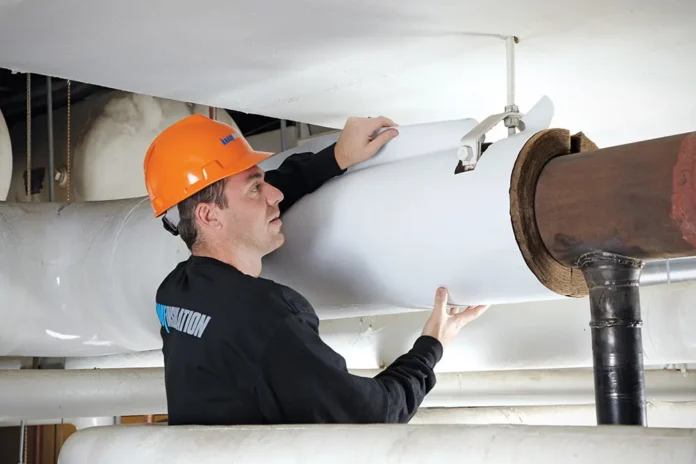Pipe isolation is a crucial step in managing and maintaining any plumbing system, whether it’s in residential properties, commercial buildings, or industrial facilities. It involves segregating a section of the piping system to prevent the flow of fluids, allowing for repairs, maintenance, or system modification without shutting down the entire system. This blog post explores practical tips for quick and easy installation of pipe isolation mechanisms, ensuring both safety and efficiency in your plumbing projects.
Understanding Pipe Isolation
Before we jump into installation tips, it’s essential to understand what pipe isolation entails. Pipe isolation allows plumbers and technicians to create a temporary barrier within the piping system. This barrier can be implemented using various devices, including valves, blinds, and plugs, which can be easily installed and removed as needed.
Choosing the Right Isolation Device
The first step in ensuring a quick and easy installation is selecting the correct isolation device. The choice will largely depend on the type of system (water, gas, etc.), the size of the pipes, and the pressure levels involved. Common options include:
- Ball Valves: Ideal for quick, quarter-turn operation, offering a tight seal.
- Gate Valves: Best suited for applications where a straight flow of fluid and minimum restriction is desired.
- Plug Valves: Used for higher velocity applications, allowing for rapid shutoff.
- Blind Flanges: Perfect for completely sealing off a section of the pipe in systems that don’t require frequent isolation.
Preparation is Key
A smooth installation begins with thorough preparation. Ensure you have all the necessary tools and equipment on hand before starting the installation process. This might include wrenches, sealant, measuring tapes, and the isolation device itself. Additionally, accurately measure the section of the pipe to be isolated to choose the appropriate size of the isolation device.
Step-by-Step Installation Guide
- Shut Off the System: Before starting the installation, ensure the system is depressurized and drained if necessary. This step is crucial for safety and to prevent any fluid from escaping during the installation process.
- Clean the Area: Clean the pipe section where the isolation device will be installed. Any debris or residue can compromise the seal and effectiveness of the isolation.
- Measure and Mark: Accurately measure the section where the isolation device will be placed and make clear marks. This ensures that the device is installed in the correct location for optimal performance.
- Install the Device: Depending on the type of device, installation may vary. For valves, this typically involves securing the valve in place using bolts or screws and ensuring a tight seal with gaskets or sealant. For blind flanges, align the flange against the pipe ends and secure it with bolts.
- Test the Installation: Once installed, slowly re-pressurize the system and check for leaks around the isolation device. It’s crucial to verify that the installation is secure and that the device is effectively isolating the intended section of the pipe.
- Document the Process: Keep a record of the installation, including the type of isolation device used, the location, and any observations during testing. This documentation is invaluable for future maintenance and troubleshooting.
Safety Considerations
Safety should always be a priority when working with plumbing systems:
- Wear appropriate personal protective equipment (PPE), such as gloves and eye protection.
- Ensure the area is well-ventilated, especially when dealing with gas lines.
- Be aware of the fluid that was running through the pipes and take necessary precautions to handle any residual substances safely.
Hydraulic Hose Repair and Insert Techniques
For more complex pipe isolation requirements, such as in hydraulic systems, specialized techniques and tools may be necessary. Hydraulic hoses are often used to transfer high-pressure fluids, making them prone to wear and tear over time. In these cases, proper repair and insert techniques can save time and money on replacements.
- Repair Techniques: Repairing a damaged hydraulic hose involves cutting out the damaged section and inserting a new piece of hose, using couplers or clamps to secure the connection. It’s essential to use high-quality components and follow manufacturer guidelines for proper repair.
- Insert Techniques: For larger hydraulic hoses, where traditional repair techniques may not be feasible, insert techniques involve adding an internal reinforcement sleeve within the damaged portion of the hose. This technique can extend the lifespan of the hose and allow for continued use without a full replacement.
Maintenance and Monitoring
After installation, regular maintenance and monitoring of the isolation device are essential to ensure its continued effectiveness. This includes periodic checks for wear and tear, leaks, and proper operation of the device. Early detection of issues can prevent more significant problems down the line.
Quick and easy installation for pipe isolation is achievable with the right knowledge, preparation, and tools. By understanding the different types of isolation devices available and following a step-by-step guide for installation, you can ensure the safety and efficiency of your plumbing projects. Remember, safety is paramount, so always take the necessary precautions when working on any plumbing system. Proper installation and regular maintenance of pipe isolation devices not only facilitate repairs and maintenance but also contribute to the longevity and reliability of the entire plumbing system.
